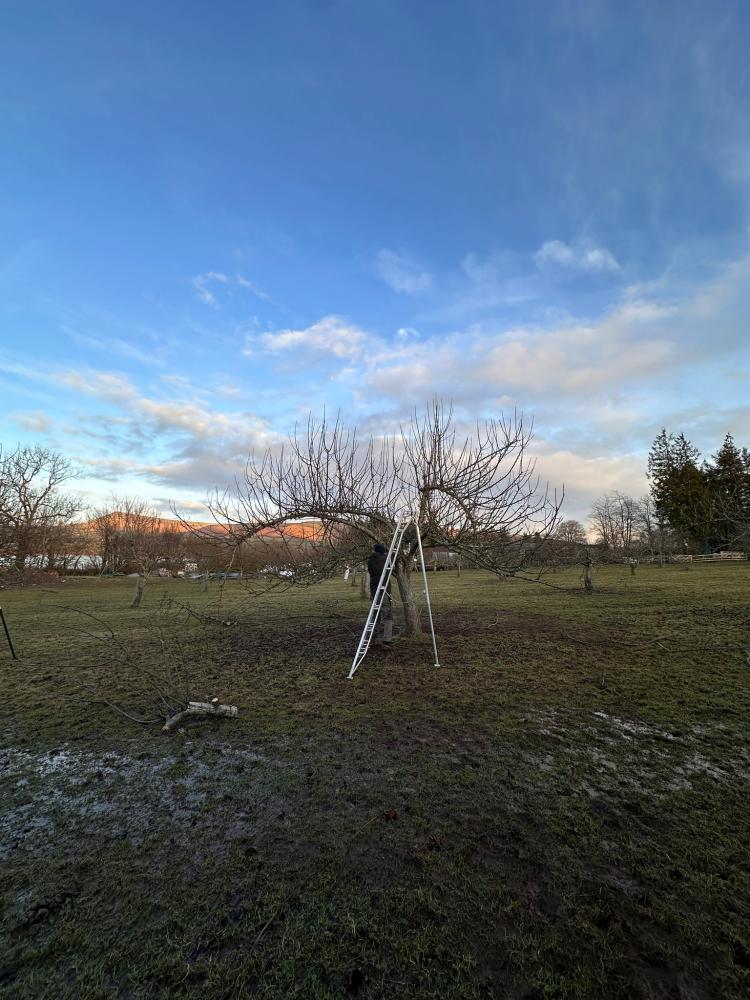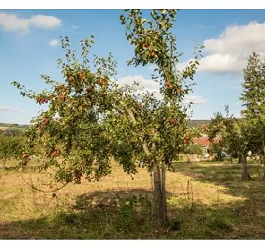At this time of year we are busy pruning the apple trees in the orchard at HQ. Henry and Lenka have been busy in the orchard hand pruning each tree to ensure they are healthy, growing in a good form and are productive in the coming growing season.

In the year 2003, Nigel and Joyce planted an orchard of 40 trees at Ty Mawr (the farm where the business was founded and still partially operates from), featuring 25 different heritage varieties of apples—many of them ancient Welsh varieties such as Pig Aderyn and Glasbury Red. This was part of a broader scheme for the farm, to bring the land back into productive use where possible and increase biodiversity.
Each year, we harvest those apples, which are juiced and bottled for us by a local company. We produce approximately 1,500 bottles of juiceannually, mostly sold in our local pub (the Red Lion, Llangors), at events and courses at Ty Mawr, and available through our website – www.lime.org.uk.
Despite experimenting with some questionable old-school apple harvesters purchased from farm sales, we have never managed to mechanise the apple picking—it is still done by hand by the family and unsuspecting visitors. We do not use any chemicals, fertilisers or pesticides, our bees help with the pollinating and we do not add any preservatives etc – so it is beautifully pure. Our Welsh Black Mountain sheep flock, pigs and miniature Shetland pony herd, keep the grass under control, we keep and use them as our conservation grazers to help to manage the whole site.
What do apples have to do with building materials, I hear you ask? Much of what we do revolves around examining how we use buildings and combining old and modern materials, techniques and technologies to ensure buildings are safe, comfortable, functional and have as little impact as possible on people and the planet. The orchard is much the same. By carefully managing the orchard, we give it purpose whilst preserving some ancient varieties of apples.
The juice has nothing added (except, occasionally, a bit of heat and rum!) and involves minimal processing to transform a natural resource into a usable product. This approach helps us to conserve and enhance our landscape, greatly improves the biodiversity of the farm, and provides an income for the family now, and hopefully future generations.














